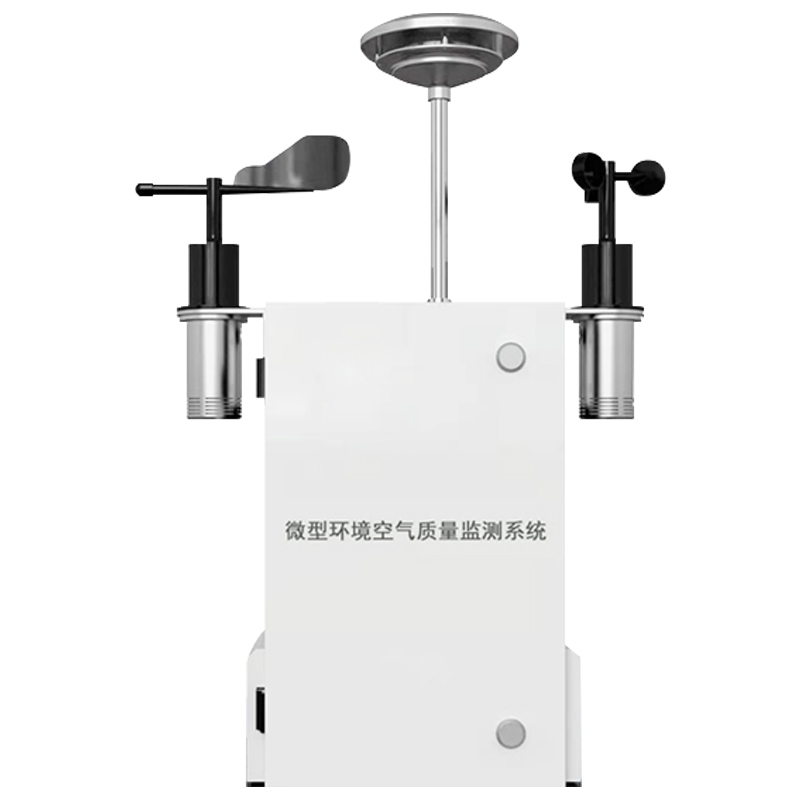Shandong Fengtu IOT Technology Co., Ltd
Sales Manager:Ms. Emily Wang
Cel,Whatsapp,Wechat:+86 15898932201
Email:info@fengtutec.com
Add:No. 155 Optoelectronic Industry Accelerator, Gaoxin District, Weifang, Shandong, China

Sales Manager:Ms. Emily Wang
Cel,Whatsapp,Wechat:+86 15898932201
Email:info@fengtutec.com
Add:No. 155 Optoelectronic Industry Accelerator, Gaoxin District, Weifang, Shandong, China
time:2025-07-18 09:12:30 source:Weather Station viewed:375 time
Building an Atmospheric Environment Monitoring System requires consideration from multiple aspects. First, regarding site layout, scientific planning should be carried out based on factors such as urban functional zoning, population distribution, and the location of pollution sources. Urban points for ambient air quality assessment should be evenly distributed in built-up areas to represent the overall average concentration of pollutants in the built-up areas; regional points and background points should be reasonably set up in areas far from urban built-up areas and major pollution sources to reflect the regional atmospheric background and national-scale air quality background levels; pollution monitoring points should be established in areas with high pollutant concentrations and regions affected by major fixed pollution sources; roadside traffic points should be set at appropriate positions on the leeward side of roadways. For example, Nanjing has built an air quality monitoring network consisting of national control points, municipal control points, reference points, industrial pollution monitoring points, roadside stations, ecological monitoring points, high-altitude scientific research intensive observation points, and air flow monitoring vehicles, covering all types of regions comprehensively.
Another aspect is equipment selection. Priority should be given to monitoring equipment with high precision and sensitivity that can stably monitor conventional pollution factors such as PM2.5, PM10, sulfur dioxide, nitrogen dioxide, carbon monoxide, ozone, as well as meteorological parameters. The FT-WZ02 Atmospheric Environment Monitoring System is recommended. It features active suction sampling and a louver box design, can be installed via wall-mounted or pole-mounted methods, can promptly reflect changes in pollutant concentrations, and allows remote control. Combined with the Internet of Things, it realizes real-time data upload and intelligent early warning, with flexible installation suitable for various scenarios.
In managing monitoring stations, data management is the core. An efficient data collection and transmission system should be built, and monitoring data should be transmitted to the supervision center quickly and accurately through cellular mobile networks, wired connections, etc. Strict quality control of data is required, including eliminating invalid data and correcting monitoring data. Through platform webpages and APPs, functions such as pollution trend analysis, pollution source tracing, statistical analysis, data reporting, and automatic alarm can be realized, providing a scientific basis for environmental protection decisions.
In addition, monitoring equipment should be calibrated, cleaned, and maintained regularly, and aging or damaged components should be replaced in a timely manner. Emergency plans should be formulated for sudden situations such as equipment failures and network interruptions to quickly resume monitoring work. A stable power supply is required, which can be achieved by adopting power supply methods such as municipal electricity combined with solar energy and backup power sources; safety protection of monitoring stations should be strengthened to prevent equipment theft and damage.

best domestic weather station is ideal for your home or industrial meteorological needs and can monitor a wide range of meteorological parameters....
Weather station monitoring equipment manufacturer, is a high-tech enterprise specializing in the research, development, production and sales of weather instruments. As a weather station monitoring equipment manufacturer, Windway Technology has launched a variety of weather station monitoring equipme...
The main role of weather monitoring systems...
Miniature visibility meter is an instrument for real-time measurement of visibility in the air. It can measure visibility indicators and provide accurate information support and basis, which is of great significance in the fields of weather forecasting, transportation, aviation, pollution monitoring...